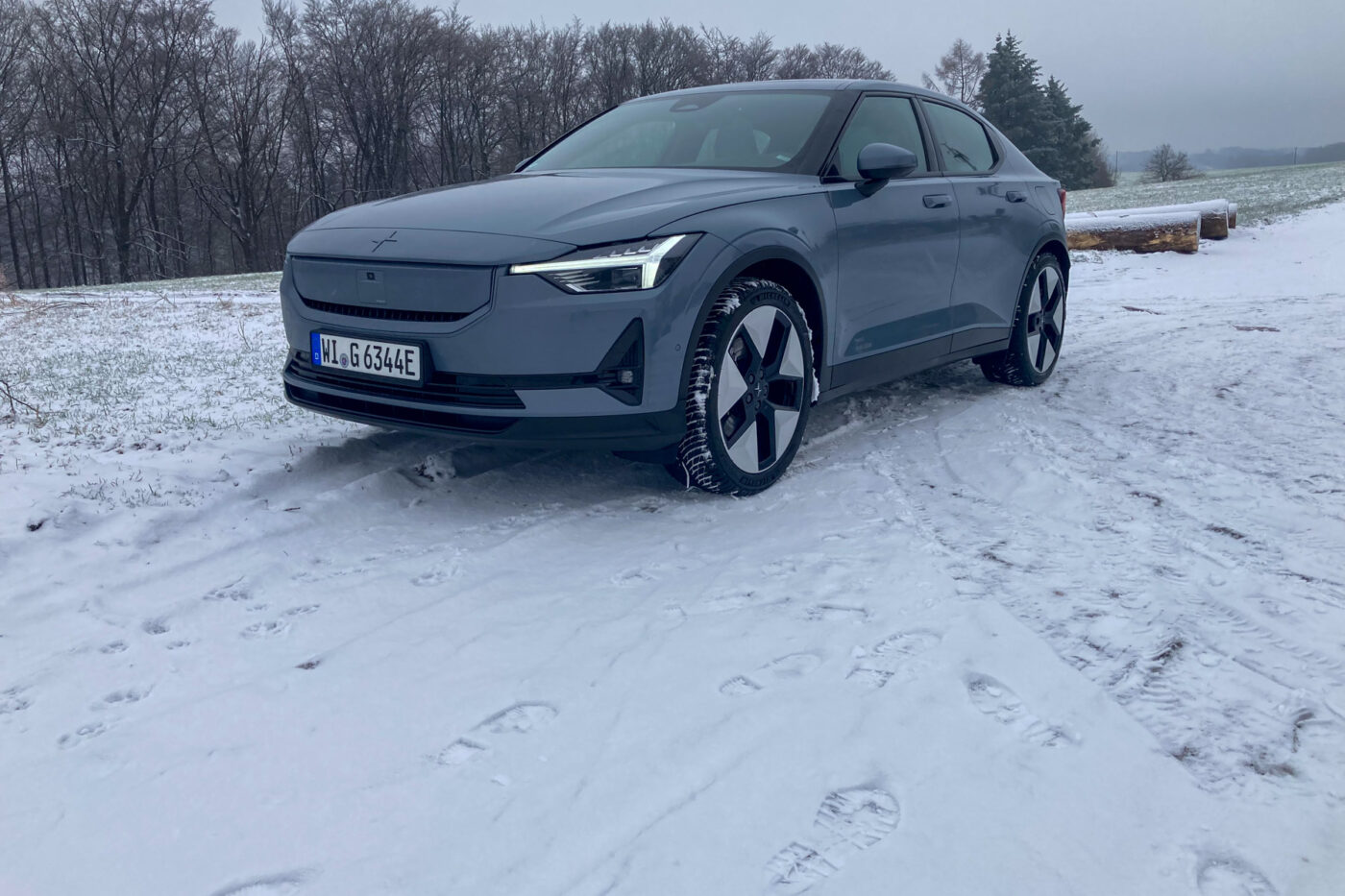
Polestar 2: How good is Model Year 2024?
You have to hand it to Polestar: From the beginning, the headquarters in Gothenburg understood how quickly electromobility is developing and how important it is for the vehicles to reflect it. Over vehicle generations, a fully developed combustion model remained untouched until the facelift four years after launch. The facelift then brought the latest generation of motors in one fell swoop. At the same time, the design was limited to a slightly different bumper or a new graphic in the headlights wherever possible – without changing the bodywork because that is expensive.
Polestar has also largely avoided changes to the bodywork of the Polestar 2, but a lot has happened under the hood since the first deliveries in 2020. The debut model with all-wheel drive was later supplemented with front-wheel drive and a smaller battery. The software has also been continuously improved.
The facelift in the classic sense is the 2024 model year: The black plastic grille has been replaced by a simpler element painted in the car’s colour so that the Polestar 2 also carries the design language of the other model series announced and presented in the meantime. Add to this a few new wheel rims and paint options, and the Polestar 2 not only looks more modern but also more like an electric car than a combustion vehicle with an electric drive. What a difference a piece of plastic at the front can make.
Small change in design, big change in technology
The change that the model has undergone in terms of technology is enormous. I must admit, I initially thought it was a mistake when rumours spread that the single-motor versions of the Volvo XC40 and C40 Recharge (now renamed EX40 and EC40) would be switched from front to rear-wheel drive for the new model year. Yes, the electric motor on the rear axle was technically possible due to the all-wheel drive. Still, the concept change appeared dubious from a business perspective: why introduce front-wheel drives in 2021 and then discontinue these models by late 2022?
Polestar confirmed the concept change at the beginning of 2023 and began deliveries in autumn. A Polestar 2 featuring a 220 kW rear-wheel drive and the new 82 kWh battery was made available to us for winter testing. Painted in ‘Thunder Grey ‘and despite the winter tyres on the optional 20-inch rims.
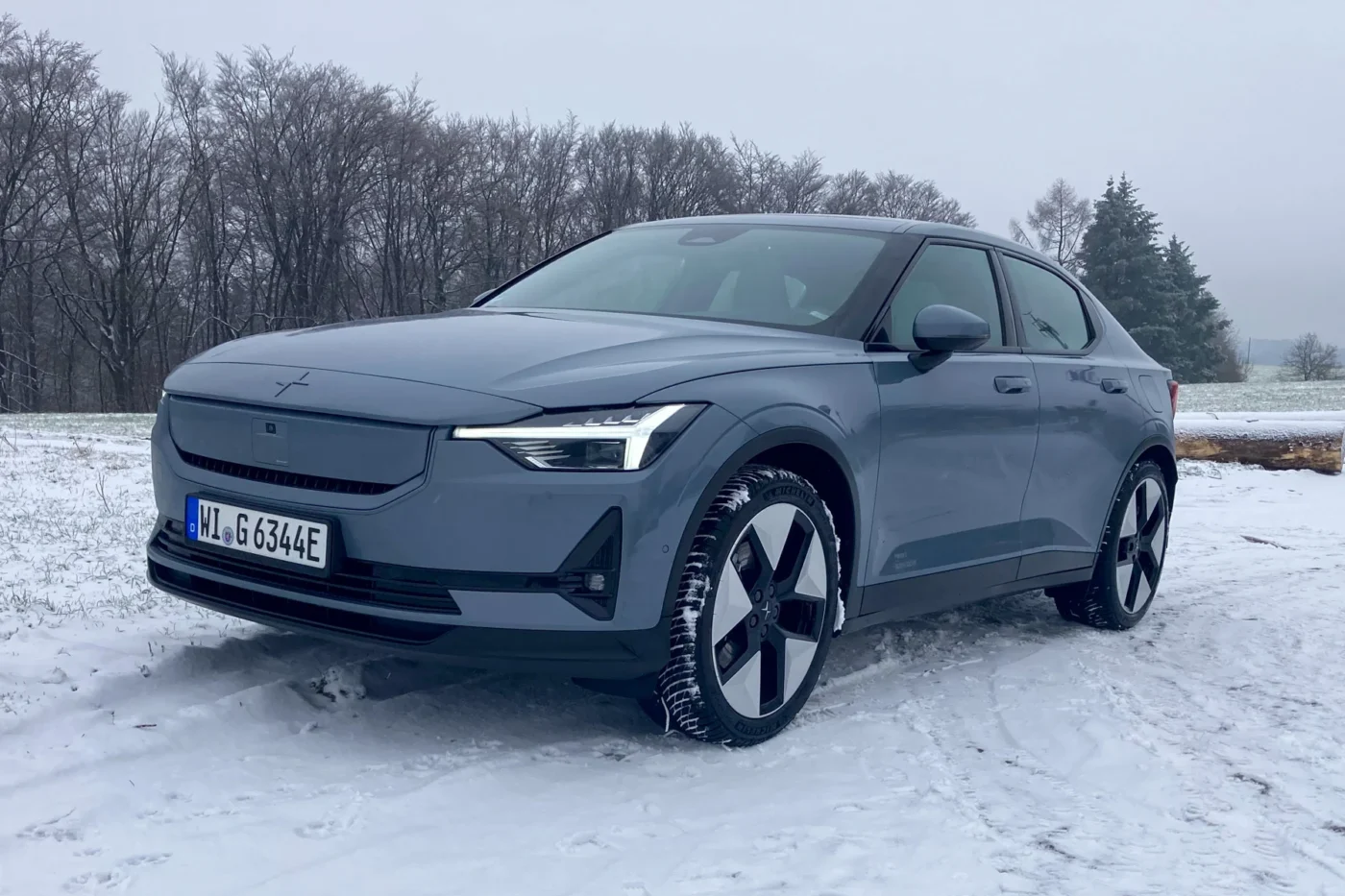
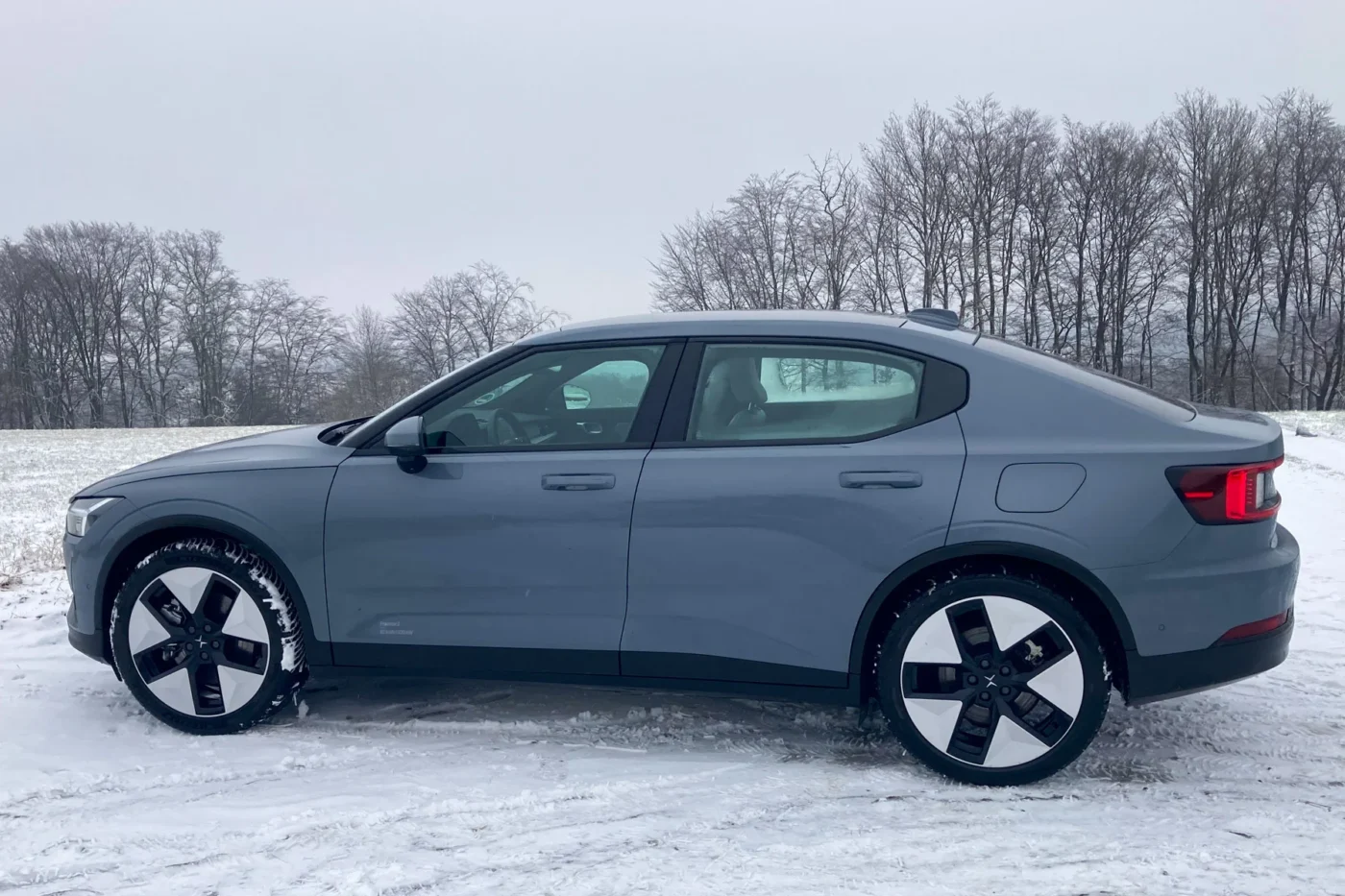
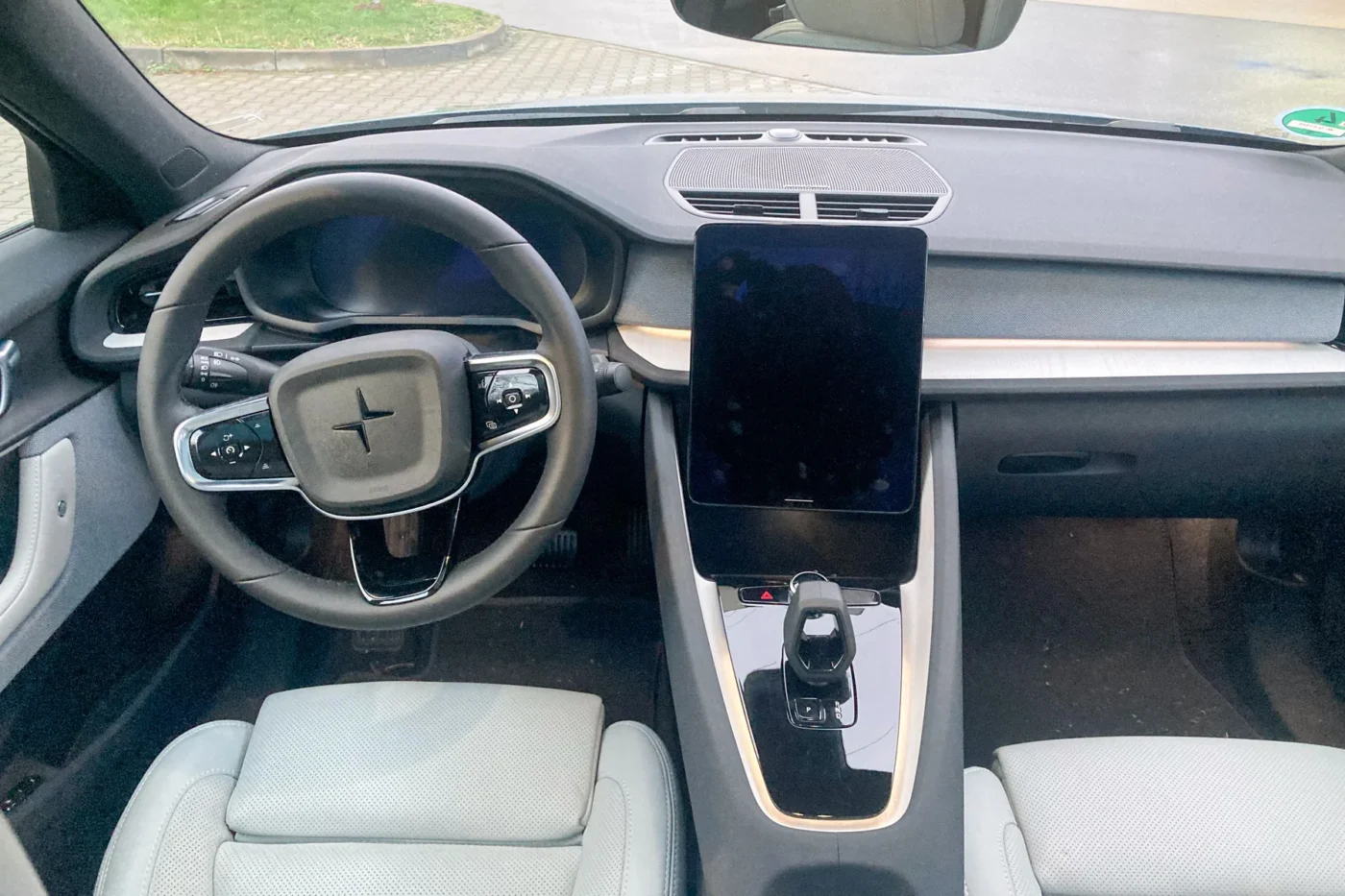

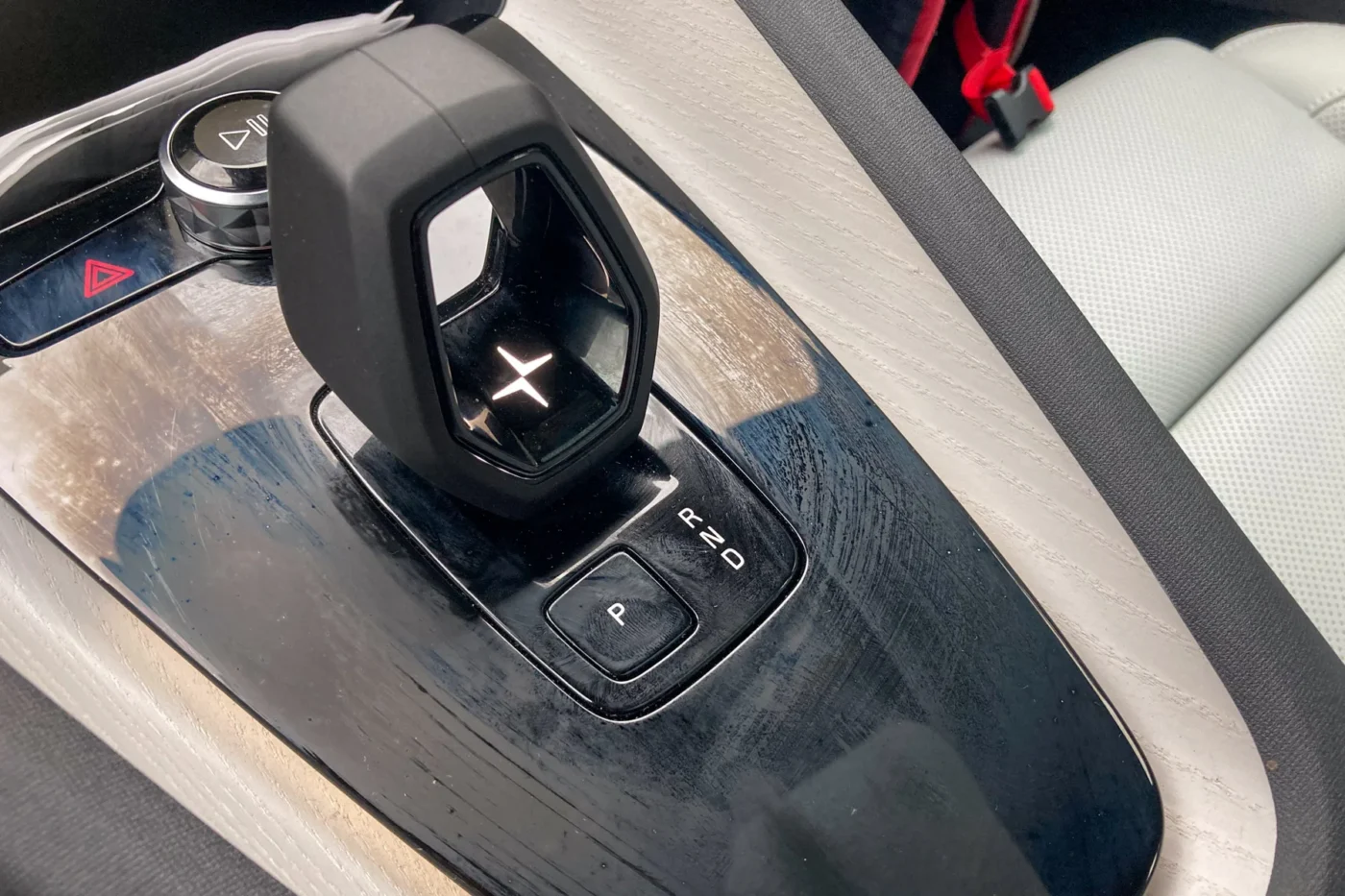
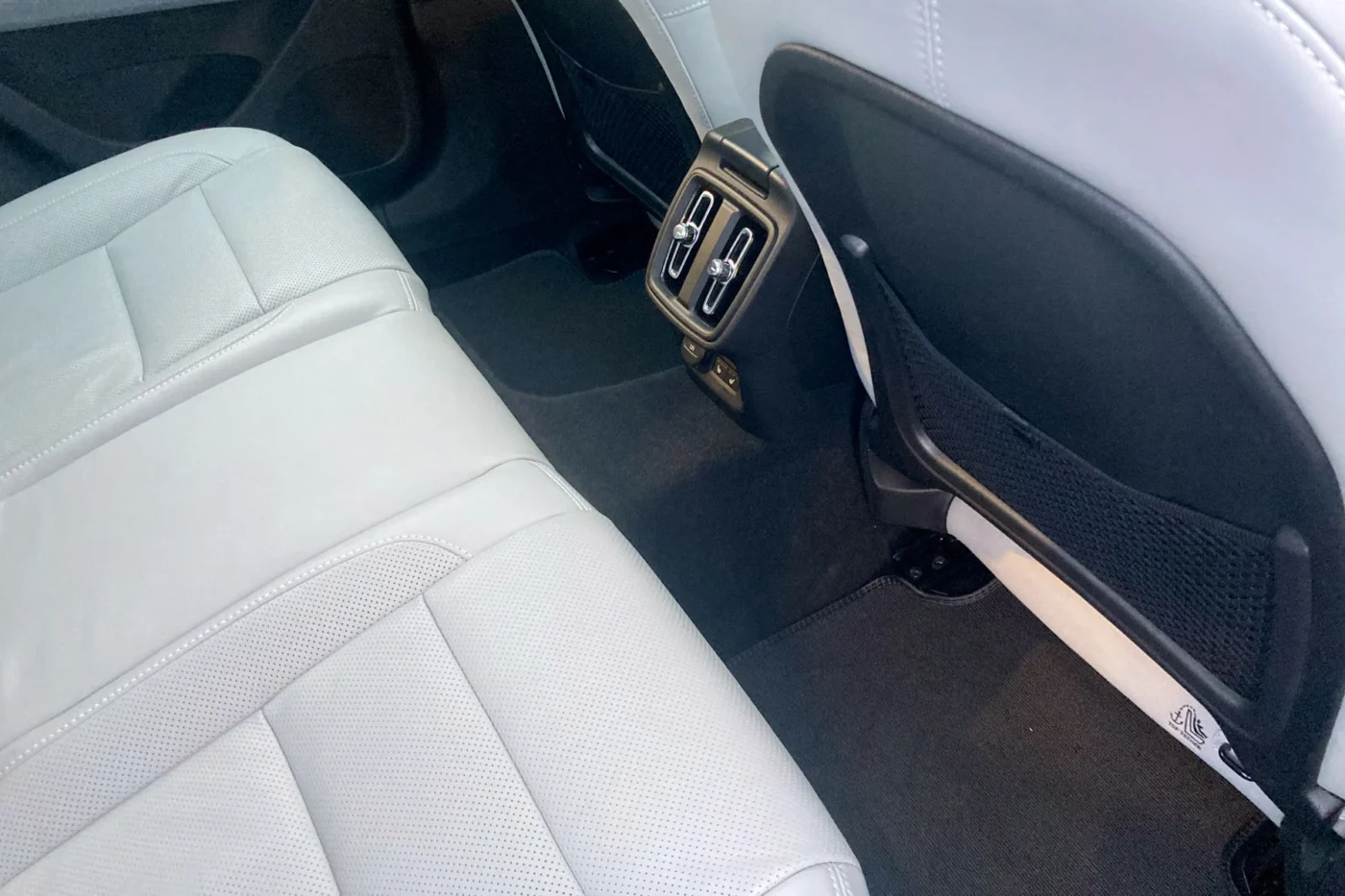
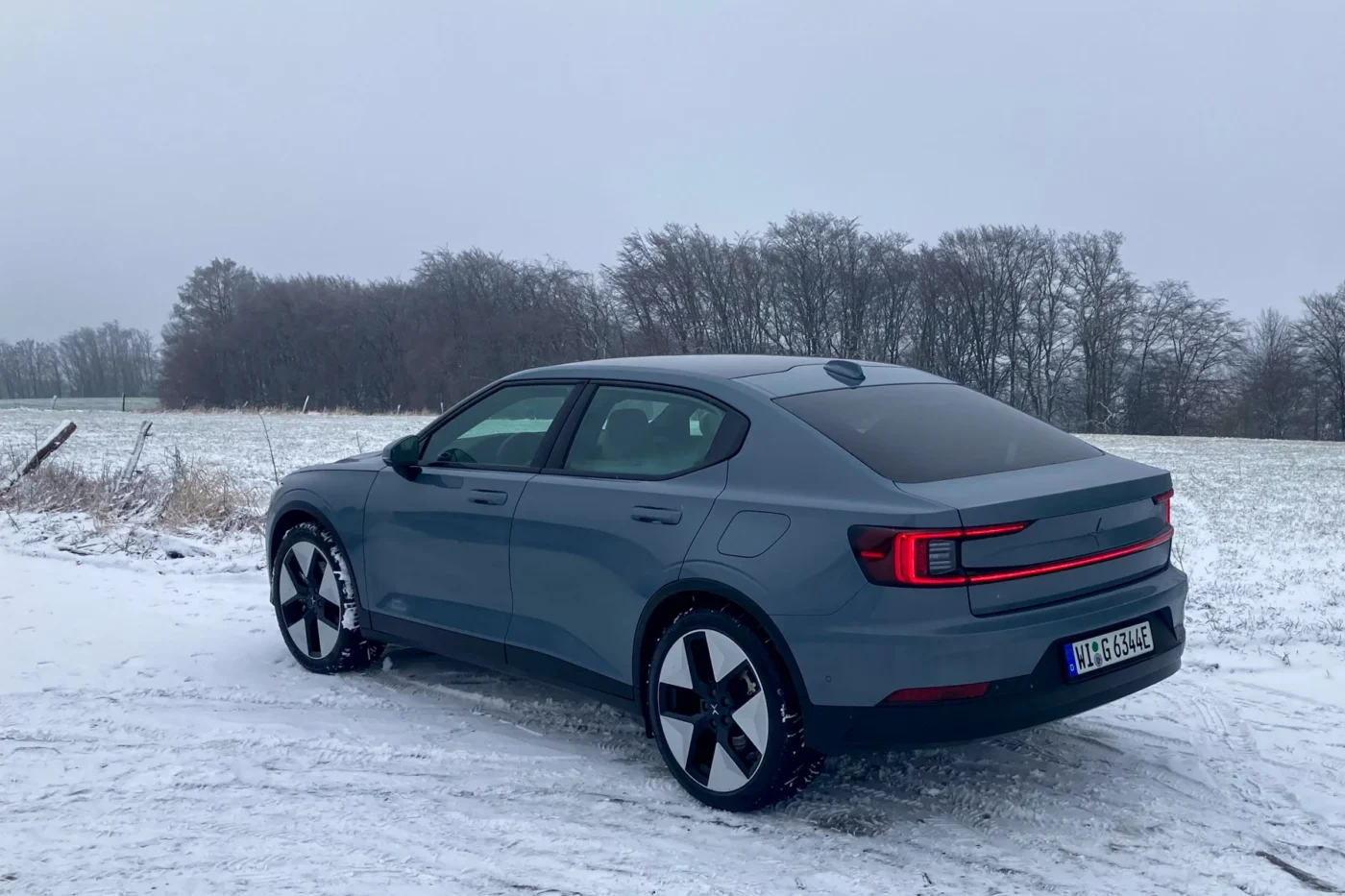
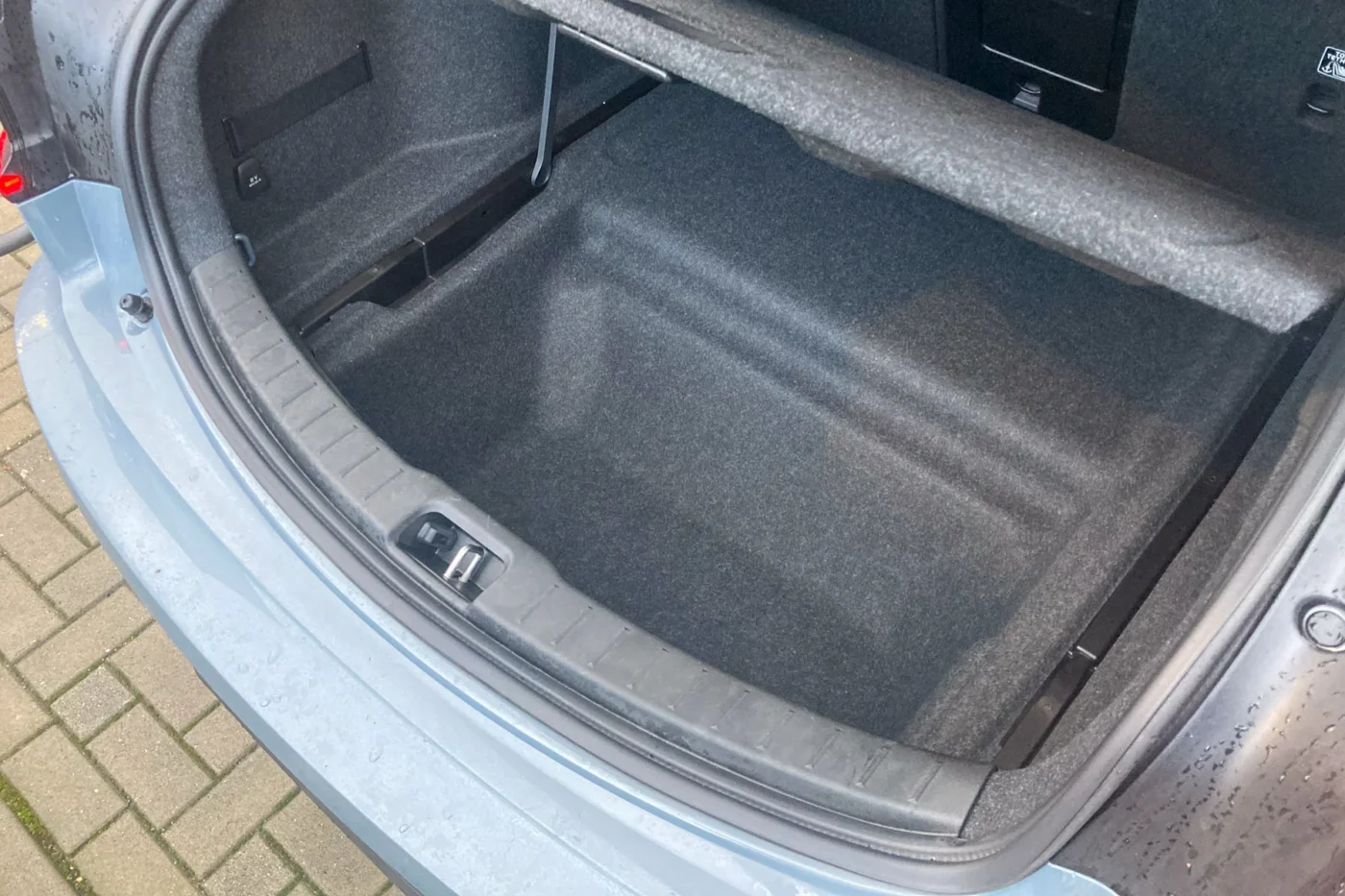
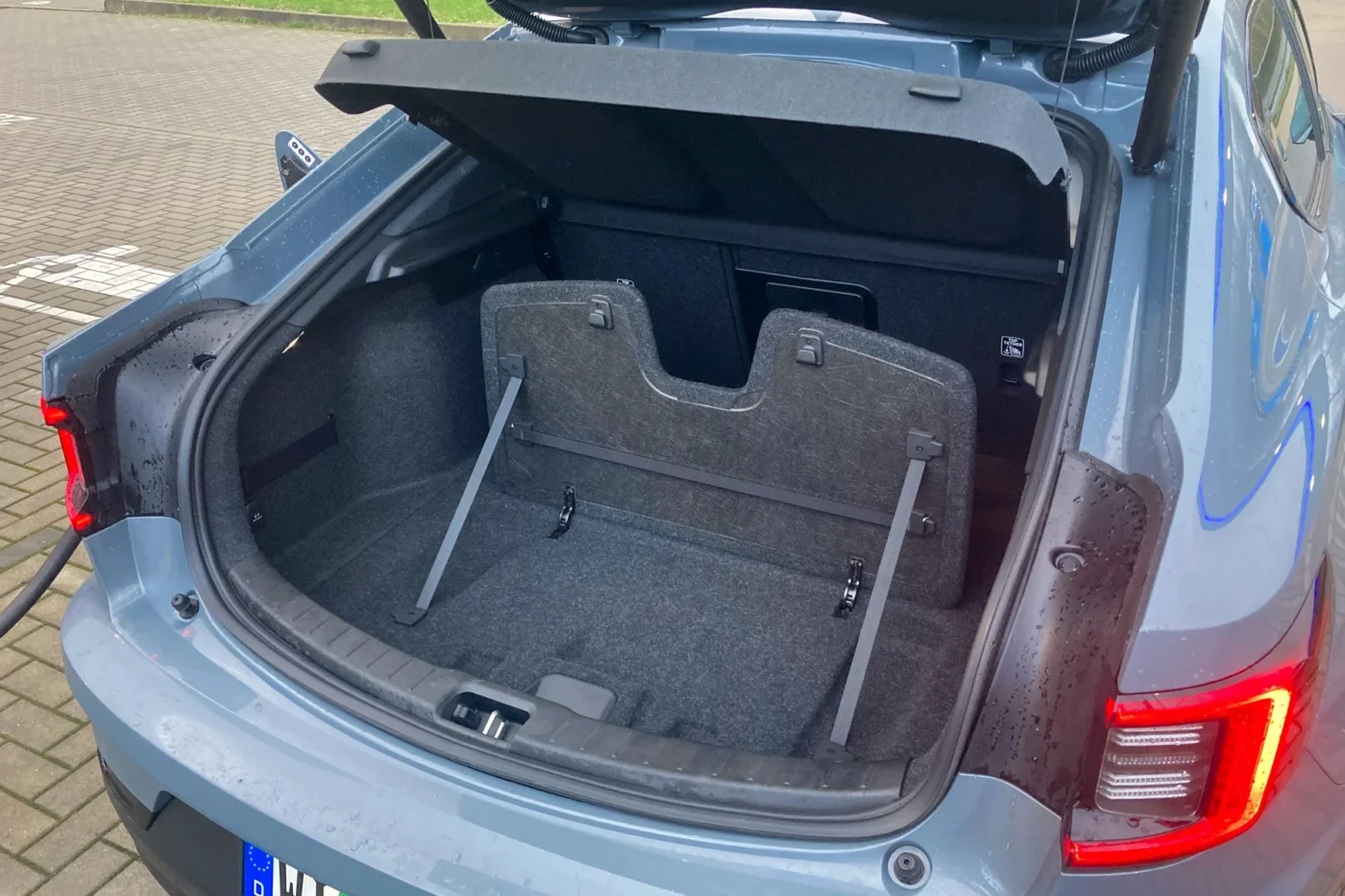
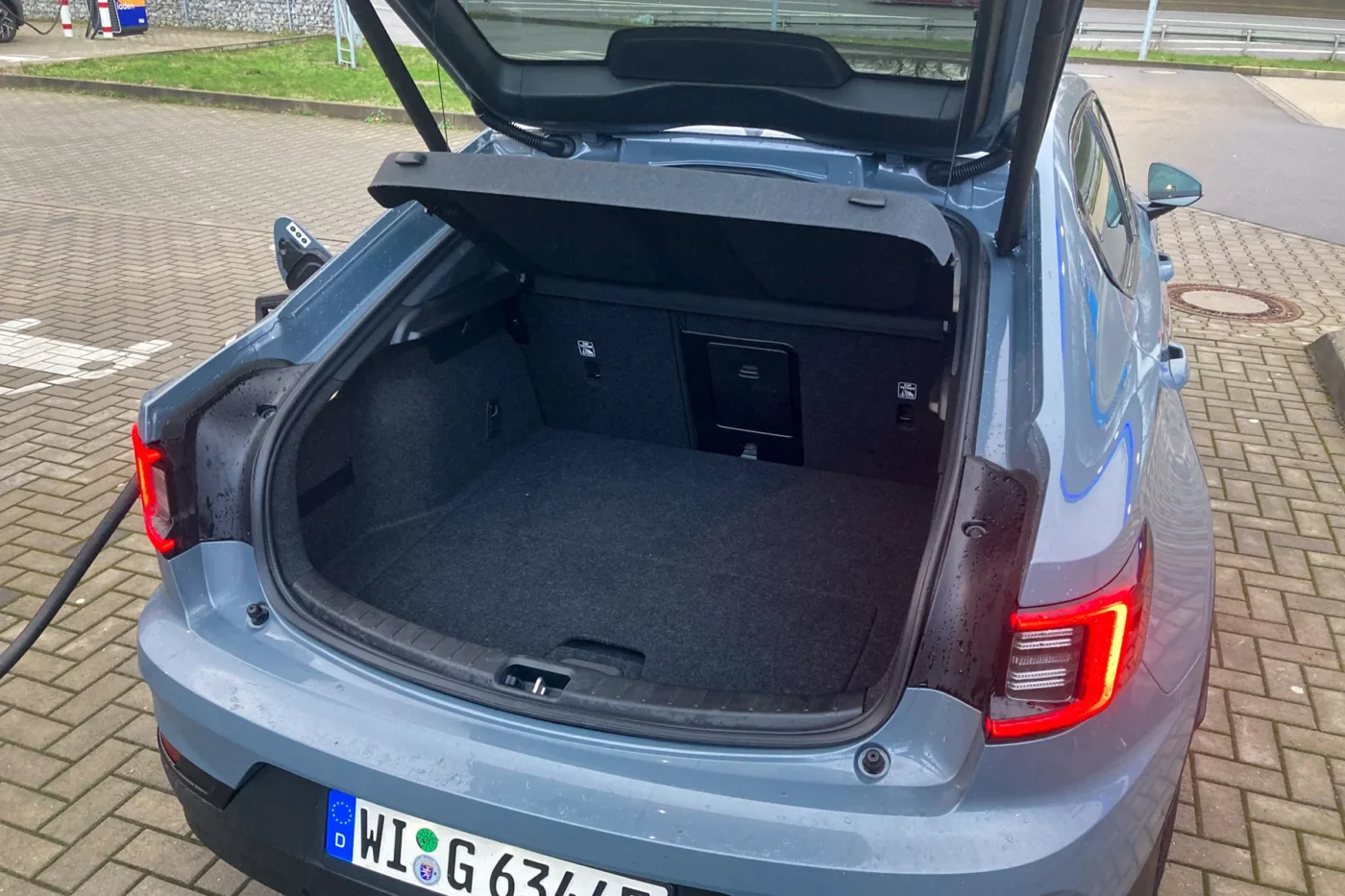
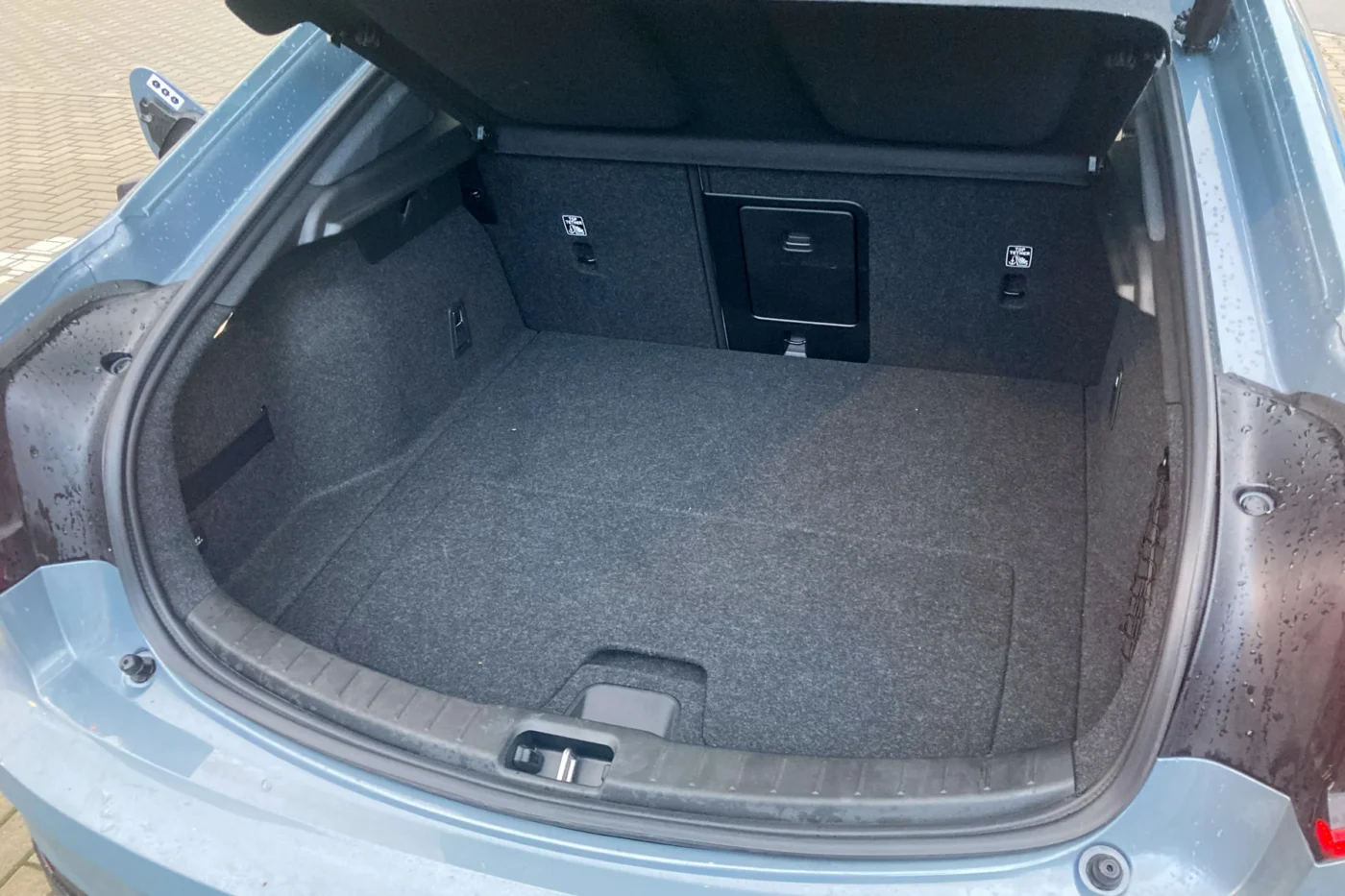
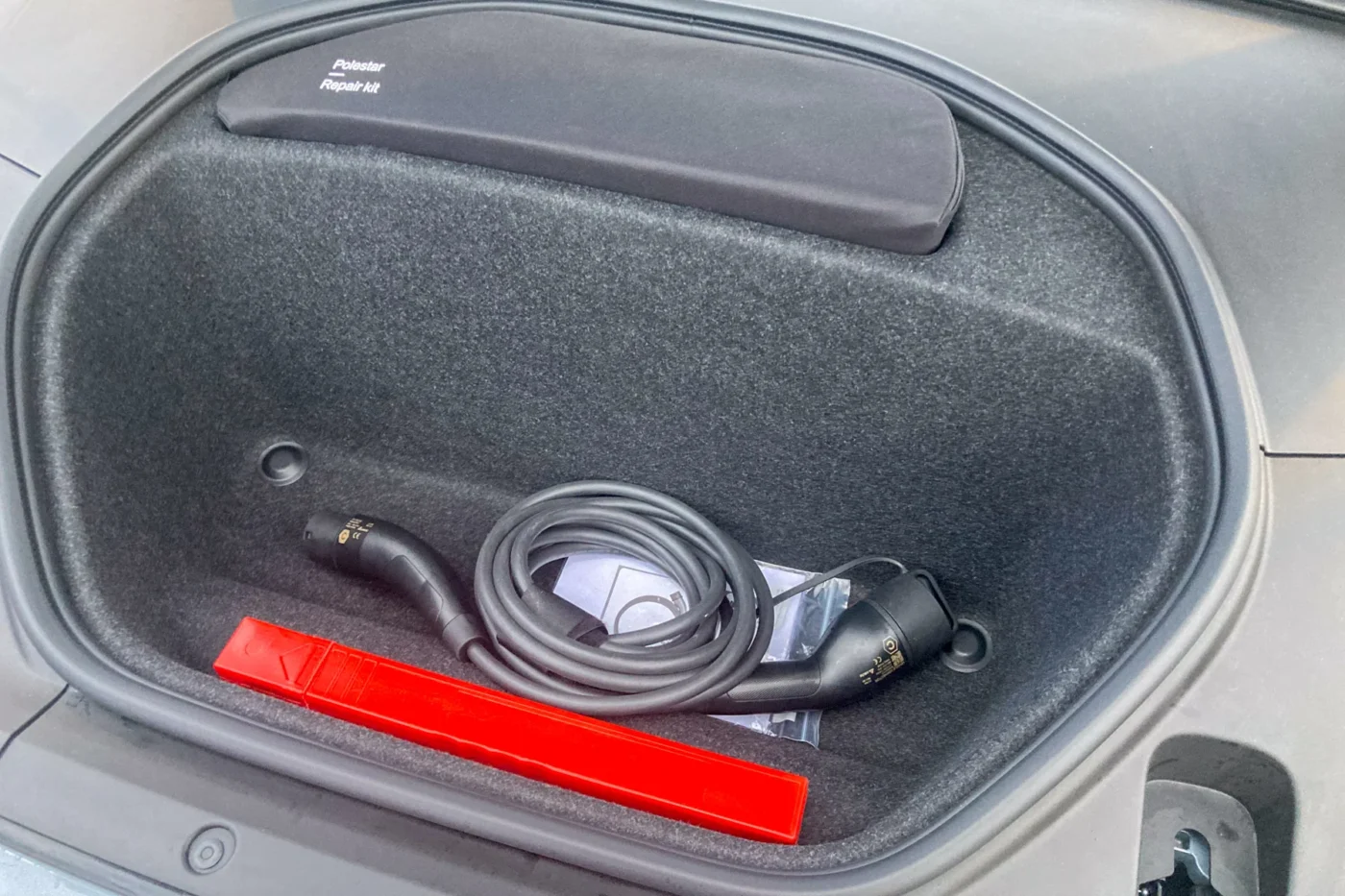
The wintry conditions, with temperatures around freezing point, mostly wet and sometimes snow-covered roads, were favourable for testing the new drive’s handling. After all, we are talking about an almost 300 hp mid-size saloon whose rear-wheel drive provides a very generous torque of 490 Nm – a combination that is fun to drive. The chassis provides precise feedback, and the traction control software is finely tuned.
Yet, the conditions were anything but ideal for gathering consumption data that remains relevant during the rest of the year and not just during the few snowy days in large parts of Germany, which happened to be our test period. The 21.8 kWh/100km average consumption should therefore be taken with a pinch of salt; at 20 degrees it would probably have been just under 20 kWh/100km on the same routes – but we cannot prove this with certainty. This figure includes a longer motorway journey, which accounted for a large part of the 887 kilometres we drove the Polestar 2. On short trips in winter, however, consumption can be extremely high, as (unless otherwise set) the cooled interior is reheated each time using a lot of energy.
Of the 82 kilowatt-hours installed in the underbody, a net 79 kWh is usable. With a winter average of 21.8 kWh/100 km, this results in a practical range of 362 kilometres, which is quite respectable. With summer tyres, slightly more merciful temperatures and dry roads, a single charge should result in over 400 kilometres of range without any major problems. That is provided the driver reins in his right foot a little, more on this in a moment.
Let’s first take a look at the charging behaviour, because here, too, the development is enormous. The Polestar 2 in the 2020 Launch Edition had a given peak power of 150 kW. Yet, in practice, this value was rarely achieved. Polestar later updated the software with battery preconditioning, for example, which improved the situation. With the latest battery update from 78 to 82 kWh (and the switch from LG cells to CATL), the Polestar 2 of MY-2024 can achieve the full 200 kW charging power currently possible in a 400-volt electric car.
Thanks to the aforementioned preconditioning, which brings the battery into the optimum temperature window in good time after the charging stop, this was even achieved in winter, albeit briefly. At another stop during the test, where the cold battery was taken to the fast charger around ten kilometres away, the battery still managed to deliver over 160 kW at peak times despite the short heating phase. So, in less than four years, the Polestar 2 has developed from a little diva, in which all factors had to be right for optimum performance, into a car suitable for daily use that delivers good performance even if not everything is running perfectly.
As the graph with our measured values for the Polestar 2 and comparable electric saloons shows, the Polestar can easily keep up with other 400-volt vehicles. Although it holds the 200-kW peak a little shorter (not even up to 20 per cent charge level), it is above a BMW i4 from 40 per cent onwards. One small catch: the BMW is ahead again at a high charge level of over 75 per cent.
So, has the investment in a new drive concept in the middle of the model cycle paid off? For the battery, the answer is clearly yes. The slightly higher energy content is, of course, welcome, but in this case, it is not as decisive as the noticeably better charging behaviour. Coming from having to show patience and, ideally, preparation at the fast charger in earlier models, in 2024, it simply works.
The answer is not quite so simple when it comes to the drive. Yes, the setup has been successful, and performance and efficiency have increased. Unlike the previous front-wheel drive models, even the drive’s small influences on steering have been eliminated by design, and traction is also better in the RWD model. However, to bring the front-wheel drive car to the limit of grip, even with its 330 Nm of torque, you had to accelerate very hard. In less sporty everyday driving, the change should hardly be noticeable for most customers. However, if the grip drops significantly, for example, in the snow, the driving behaviour changes, and you have to pay attention to the rear axle. Some drivers might enjoy the fact that the traction control doesn’t intervene immediately but allows for some lateral stability – after all, this is a mid-range saloon with a rear-wheel drive with almost 300 hp. On the other hand, if you don’t expect this behaviour, it may come as a surprise.
For the rest of the vehicle, the 4.61-metre-long Polestar 2 is still no space wonder. You can feel the restrictions imposed by the CMA mixed platform: the centre console, which protrudes to accommodate the upright touchscreen, limits the space for the knees at the front, while a high cardan tunnel filled with battery cells restricts legroom in the back. There is a small frunk for charging accessories or small bags. The boot itself is sufficient at 405 to 1,095 litres but certainly doesn’t set any benchmarks. Despite the rear-wheel drive, there is another generous storage compartment under the boot floor. The workmanship is still good, and the choice of materials is largely high-quality, for example, in the fabrics or wooden elements. However, the large plastic surfaces in high-gloss black will still attract dust and fingerprints in 2024. At least for the steering wheel buttons, Volvo is now using a matt plastic, but Polestar is not yet.
Conclusion
The Polestar 2 has improved noticeably with the smaller updates, and the 2024 model year, with all its changes, is another step in the right direction. With its design and driving performance, the model will continue to reach its target group. At the same time, it will probably remain limited to these buyers – design aficionados, car lovers, and tech enthusiasts. In my opinion, two points stand in the way of greater success: its mixed platform and the price. Other models on a pure EV platform offer noticeably more space. And since 2020, competitors such as the Tesla Model 3 have become cheaper, while the Polestar price increased. The Long Range Single Motor costs at least 49,975 euros. You have to offer more for that in 2024. However, Polestar’s learning curve whets the appetite for upcoming models, which are also rather proudly priced but at least sit on a dedicated electric platform.
Translation by Chris Randall



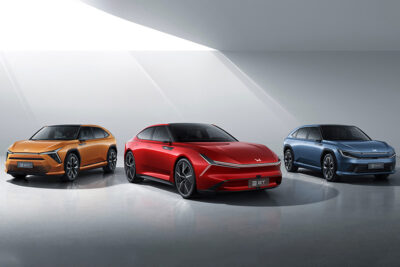

1 Comment